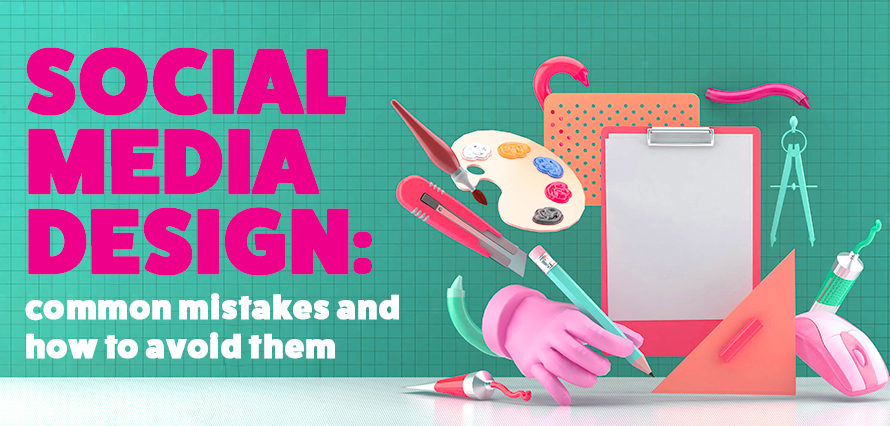August 5, 2021

On average, users post 6,000 Tweets every second on Twitter. As a Social Media Designer, standing out from the pack is crucial, and you probably dedicate a huge amount of your time to researching competitors, trawling through Facebook design groups for inspiration, or looking at the work of your peers on Instagram. There’s creativity everywhere, and excellent design as well. But what if your content is being held back by some super small (or huge, easily overlooked) mistakes?
Stock photos
Okay, everyone uses the odd stock photo now and then, but believe us, if you’re trying to sell your audience on the authenticity of your brand, there’s few things worse than using the same image for Artificial Intelligence they’ve seen every single day for the past six years. You know the one. It’s blue. It’s got some connected wire graphic over a planet. It’s tired, and you’re just as sick of it as they are.
We want to be clear – there’s nothing inherently wrong with using stock photography. Just make sure you’re curating your bank of images to fit the voice and identity of your brand, and go out of the way to choose lesser known images that are eye catching and attention grabbing.
Blurry images
It doesn’t matter how good your creative is if it’s not being shown to users in its proper form. If your image file is too small, or is incorrectly sized, it’ll have to stretch to fit the sizing of whatever platform you’re posting on. Any pixilation is going to make your content look unprofessional, no matter the genius of the design that went into it. Upload bigger, higher resolution images, and stay up to date with the correct sizings for your social platforms.
Negative space is your friend
Social media is overrun with content, and sometimes the best thing for your audience is the chance to breathe. A common mistake for graphic designers is to fill up every inch of space, throwing letters, shapes and cut-out people in every nook and cranny. This can quickly cause your audience to see only clutter, become confused, and swipe to the next image.
Use the negative space available to you. Let your post copy do some of the heavy lifting, and let your creative do what it’s intended to do – grab the attention of your audience so that they stop scrolling for a second.
An alignment assignment
If you are not using grids when designing your graphic, you might want to re-think your approach. Misaligning copy or images can make your entire channel look messy and amateur. If that’s the look you’re going for, then great! Otherwise, think about making sure every piece of copy is aligned, so that a sub-heading slots in neatly with the heading, or a person’s name is centred below the circular headshot (preferably high quality) that they provided. When everything is aligned, the whole graphic becomes pleasing to the eye, and can be all your creative needs to take it to the next level.
Right, that’s it from us! Feel free to ignore all of these tips – they are just tips, after all, and graphic design is a subjective and highly situational subject. But we hope you found even one of these tips useful, and can’t wait to see what you come up with.
Stay tuned to our social channels for more, and head over to our blog page for even more insights into social media!